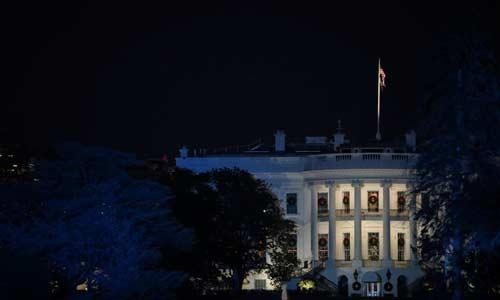NOTE: The following is one of a series of over 100 case studies produced by the Union of Concerned Scientists' Scientific Integrity Program between 2004 and 2010 to document the abuses highlighted in our 2004 report, Scientific Integrity in Policy Making.
In 2004 the U.S. Forest Service (USFS) exaggerated the impact of forest fires on spotted owl habitat in an attempt to expand old-growth logging in the Sierra Nevada. In an effort to portray increased logging on public lands as a means of protecting animals from wildfires, the Forest Service released a controversial brochure titled Forests with a Future,¹ in spite of biologists' disagreement about the fire-owl connection.
The brochure and a related Forest Service website state that "Wildfire loss of protected spotted owl areas now averages 4.5 sites per year," an apparent reference to 18 owl nesting sites burned by wildfires over the previous 4 years.² In the brochure, which was published as the Bush White House sought to overhaul Clinton-era restrictions on logging in Sierra Nevada old-growth forests, the Forest Service predicted that the administration's new logging initiative would both reduce wildfire and double spotted owl nesting grounds over the next fifty years. In investigating the spotted owl claims further, biologists both inside and outside the agency have found that at least 7 of the 18 "lost" sites were, in fact, green and occupied by owls.³ The agency claimed that any misrepresentation of data was due to error, not an attempt to mislead the public. However the erroneous claims remain up on the Forest Service website over two years later.
The Forests with a Future brochure was also widely criticized for the inclusion of a misleading series of photographs purporting to compare the Sierra Nevada forests of today with those of a century ago. A photograph from 1909 shows an "open, parklike forest with large trees spaced widely apart," and the series shows forests growing thicker with the passing decades.4 The implicit message is that the natural state of a healthy forest involves widely spaced trees with little or no underbrush, and that poor forest management has put the nations forests at risk of dangerous wildfires. However, the brochure failed to disclose that the 1909 photo did not depict an untouched forest and indeed was taken just after the forest had been logged. The brochure also did not disclose that the 1909 photo was taken in Montana and not California.
Michael Gertsch, a wildlife biologist with the U.S. Forest Service who coordinated threatened and endangered species projects in the Pacific Northwest, was removed from the team that wrote the forest management plans after he complained about the mischaracterization of fire's effect on the owl. "I'm real uncomfortable with the constant portrayal of fire in the environment as a negative thing," said Gertsch.5 Sonner quoted Gertsch as saying that his analysis showed "that fire appears to be more of a maintenance mechanism than a destructive force for owl habitat." A reference to this analysis was removed from the forest management plan.6
According to Gertsch, the Forest Service was uninterested in the real science regarding the impact of wildfires on spotted owls. Chad Hanson, director of the John Muir Project, an organization that opposes commercial use of federal lands, agreed, saying: "The only reason the revisions [to forest policy] were made was to allow logging of bigger trees. It was a gift to the timber industry."7 Monica Bond, a biologist who has surveyed owls for the Forest Service and now works for the watchdog group Center for Biological Diversity, similarly contended that the agency used "concerns over the owl and concerns about loss of habitat as a justification to do more logging."8
1. U.S. Forest Service, “Forests With A Future,” accessed December 7, 2007.
2. U.S. Forest Service, “Forests With A Future: Protect Wildlife in the Sierra Nevada,” website accessed December 8, 2006.
3. René Voss, “US Forest Service Misuses Science to Log Spotted Owl Habitat in Sierra Nevada,” John Muir Project, 15 September 2004, accessed 25 September 2006.
4. Scott Sonner, “Forest Service pamphlet criticized: Logging photos said to misrepresent Sierra,” Associated Press, April 12, 2004, accessed December 8 2006.
5. Scott Sonner, “Biologists, Others in Way of Logging Plans: Forest Service Says Thinning Will Help Spotted Owls,” Associated Press, 7 August 2004, accessed 25 September 2006.
6. Ibid.
7. Ibid.
8. Voss.



